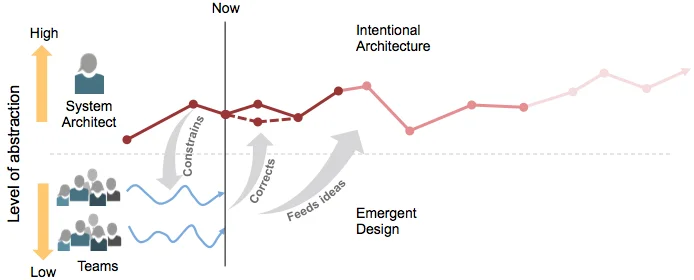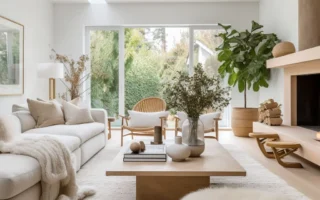Introduction:
In the realm of architecture and design, there exists a delicate dance between emergent design and intentional architecture. Both approaches offer unique perspectives and methodologies, shaping the built environment in distinct ways. Understanding the balance between emergent design, which emphasizes adaptability and evolution, and intentional architecture, which prioritizes preconceived plans and deliberate choices, is essential for architects and designers striving to create spaces that are not only functional but also meaningful and responsive to evolving needs. In this exploration, we delve into the nuances of these two approaches and how they intersect to create spaces that resonate with their inhabitants.
1.Emergent Design: Embracing Adaptability and Evolution
Definition: Emergent design is a dynamic approach that emphasizes flexibility, adaptability, and responsiveness to changing circumstances and user needs. Instead of adhering strictly to predefined plans, emergent design allows for evolution and iteration based on feedback and real-world usage.
Agile Principles: Emergent design draws inspiration from agile methodologies, where collaboration, iteration, and continuous improvement are key principles. This approach encourages designers and stakeholders to remain open to new ideas and insights throughout the design process.
User-Centric Focus: At the heart of emergent design is a deep understanding of user needs and behaviors. By prioritizing user feedback and observation, designers can create spaces that are truly tailored to the needs and preferences of their occupants.
Iterative Process: Emergent design unfolds through an iterative process of exploration, experimentation, and refinement. Design solutions emerge organically as designers engage with users, test ideas, and iterate based on feedback, resulting in spaces that evolve over time.
2.Intentional Architecture: Crafting Purposeful and Deliberate Designs
Definition: Intentional architecture is characterized by deliberate planning, careful consideration of design principles, and purposeful decision-making. This approach prioritizes preconceived plans and intentions, aiming to achieve specific goals and objectives from the outset.
Design Vision: Intentional architecture begins with a clear design vision, informed by research, analysis, and conceptualization. Designers develop a comprehensive understanding of the project’s context, requirements, and constraints, guiding the creation of a cohesive design concept.
Design Principles: Intentional architecture adheres to established design principles such as proportion, scale, balance, rhythm, and harmony. Design decisions are made thoughtfully, with an emphasis on creating spaces that are aesthetically pleasing, functional, and enduring.
Long-Term Vision: Intentional architecture considers the long-term implications of design decisions, aiming to create spaces that stand the test of time both functionally and aesthetically. Attention to detail, material selection, and craftsmanship are paramount in achieving this long-term vision.
3.Finding Harmony: The Intersection of Emergent Design and Intentional Architecture
Synergy of Approaches: While emergent design and intentional architecture may seem at odds, they can actually complement each other when applied thoughtfully. Emergent design brings flexibility and adaptability to the design process, while intentional architecture provides a solid framework and direction.
Adaptive Planning: By combining emergent design with intentional architecture, designers can adopt an adaptive planning approach that allows for both spontaneity and structure. Design plans serve as a roadmap, providing guidance and direction, while remaining open to emergent opportunities and insights.
Continuous Feedback Loop: The intersection of emergent design and intentional architecture creates a continuous feedback loop, where design decisions are informed by real-world usage and user feedback. This iterative process enables designers to refine their designs over time, ensuring that spaces remain responsive to evolving needs and preferences.
4.Case Studies: Examples of Balanced Design Approaches
Case Study 1: The High Line, New York City – The transformation of an abandoned railway into an elevated park demonstrates the synergy of emergent design and intentional architecture. The project began with a clear vision and design concept but evolved iteratively based on user feedback and community input.
Case Study 2: Google Campus, Mountain View – Google’s campus design embodies intentional architecture, with carefully planned buildings and landscapes that reflect the company’s values and culture. However, the campus also embraces emergent design principles, allowing for flexibility and adaptation as the company grows and evolves.
Conclusion:
In the dynamic world of architecture and design, striking the balance between emergent design and intentional architecture is essential for creating spaces that are both functional and meaningful. While emergent design offers flexibility and adaptability, intentional architecture provides a solid foundation and direction. By finding harmony between these two approaches and embracing a continuous feedback loop, designers can create spaces that evolve over time, remaining responsive to the needs and preferences of their occupants. Ultimately, the synthesis of emergent design and intentional architecture empowers designers to craft spaces that inspire, engage, and endure.




